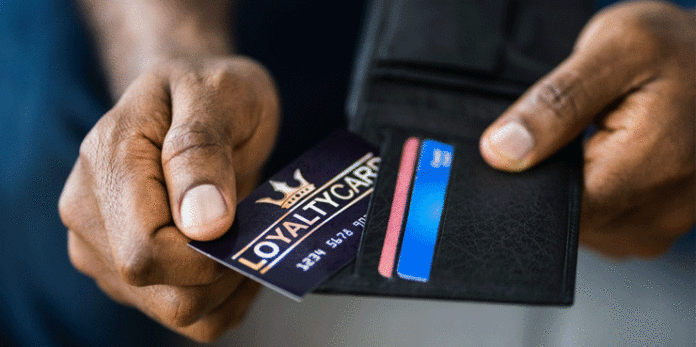Loyalty programs are an integral part of any retail business. In fact, they can make or break a brand.
According to Queue it, 84% of consumers are more likely to stick with a brand that offers a loyalty program. Additionally, 60% of customers in loyalty programs say they have better experiences with brands because their connection transcends the transactional.
“Loyalty programs have proved to be a mechanism that drives engagement with consumers and brings tremendous value to retailers. Not just on a typical day-to-day transactional interaction, but also on the data they can collect from customers and build relationships,” Len Covello, CTO of Engage People, says. “It’s essential for any retailer to have some sort of loyalty program. It doesn’t have to be one where a shopper earns points, but it can also be paid loyalty programs, such as Amazon Prime.”
Here are some critical advantages to implementing a customer loyalty program:
- Improved customer retention: A loyalty program can help you retain customers you worked hard to attract in the first place, preventing them from leaving and going to your competitors.
- Increased customer lifetime value: Increasing the income you earn per customer can improve customer acquisition ROI. A loyalty program is a practical way to achieve this.
- Improved brand recognition: Customers who love your loyalty program will more likely praise your business to their network, resulting in word-of-mouth recommendations and improved brand recognition.
- Increased customer satisfaction: Demonstrating that you care about your loyal customers will enhance their happiness, resulting in more sales, better reviews and positive brand perception.
- Improved customer insights: A loyalty program provides valuable customer behavior and preferences data. This information lets you refine your marketing and sales efforts and allocate your budget more effectively.
How to Revamp Your Loyalty Program with Technology
While having a loyalty program can definitely keep your brand relevant, it’s not enough. Covello notes that many retailers are leveraging technology and giving shoppers an omnichannel experience with their loyalty programs in order to stay relevant and keep customers coming back for more.
Take Sephora, for example. Their loyalty program gives shoppers the option to use the program’s benefits and rewards both online and in store. Wherever they choose to shop, they can still earn and use rewards.
Here are some different ways in which technology can help boost your loyalty program:
- Personalization and segmentation. This means using data and analytics to tailor your loyalty offers, rewards and communications to each customer’s needs, preferences and behavior. By doing this, you can increase customer satisfaction, loyalty and lifetime value, as well as reduce churn and acquisition costs.
- Gamification and socialization. This means using elements of game design and social media to make your loyalty program more fun, interactive and engaging. By doing this, you can boost customer motivation, participation and advocacy, as well as create a sense of community and belonging.
- Omnichannel and mobile. This means integrating your loyalty program across all your channels and touchpoints and optimizing it for mobile devices and platforms. By doing this, you can provide a seamless and consistent customer journey, increase customer convenience and accessibility and leverage the potential of mobile features and functionalities.
- Sustainability and social impact. This means aligning your loyalty program with your brand values and purpose, and offering rewards and incentives that support environmental and social causes. By doing this, you can attract and retain customers who share your vision and mission, enhance your brand reputation and trust and make a positive difference in the world.
- Blockchain and cryptocurrency. This means using decentralized ledger technology and digital currency to create more secure, transparent and flexible loyalty programs. By doing this, you can reduce fraud and transaction costs, increase customer ownership and control over their loyalty data and rewards and create new opportunities for innovation and collaboration.
Partner with Other Brands for Your Loyalty Program
Partnering with other businesses for your loyalty program can offer several advantages, from expanding your reach and exposure to new and existing guests to enhancing your value proposition and reducing costs and risks. You can also benefit from sharing resources, expertise and data, as well as strengthening your brand image by aligning yourself with businesses that share similar values and missions.
“What you create now is the ability for customers’ lifecycles to be managed through a single loyalty program,” Covello says. “Allowing the customer to earn in multiple locations is a big piece in growing loyalty programs.”
Allow Shoppers to Pay with Points
Covello suggests that another way to boost your loyalty program is to allow your customers to be able to pay with points that they earned through the program. “Especially with what we’ve gone through in the last few years, whether it’s with day-to-day purchases or aspirational purchases for things such as travel, that currency is often looked upon as free currency to customers.”
Your customers should be able to feel rewarded for shopping with you. And by offering the ability to pay with their earnings can keep them coming back for more, since they know they can spend their points. This can also encourage shoppers to make larger purchases, since they know they can use some “free currency.”
Overall, there is no downside to implementing a loyalty program. Not only can it encourage more shoppers to purchase from your brand, but it can also help create loyal customers.




